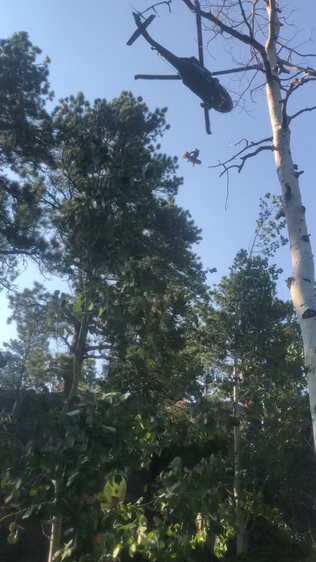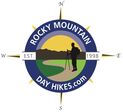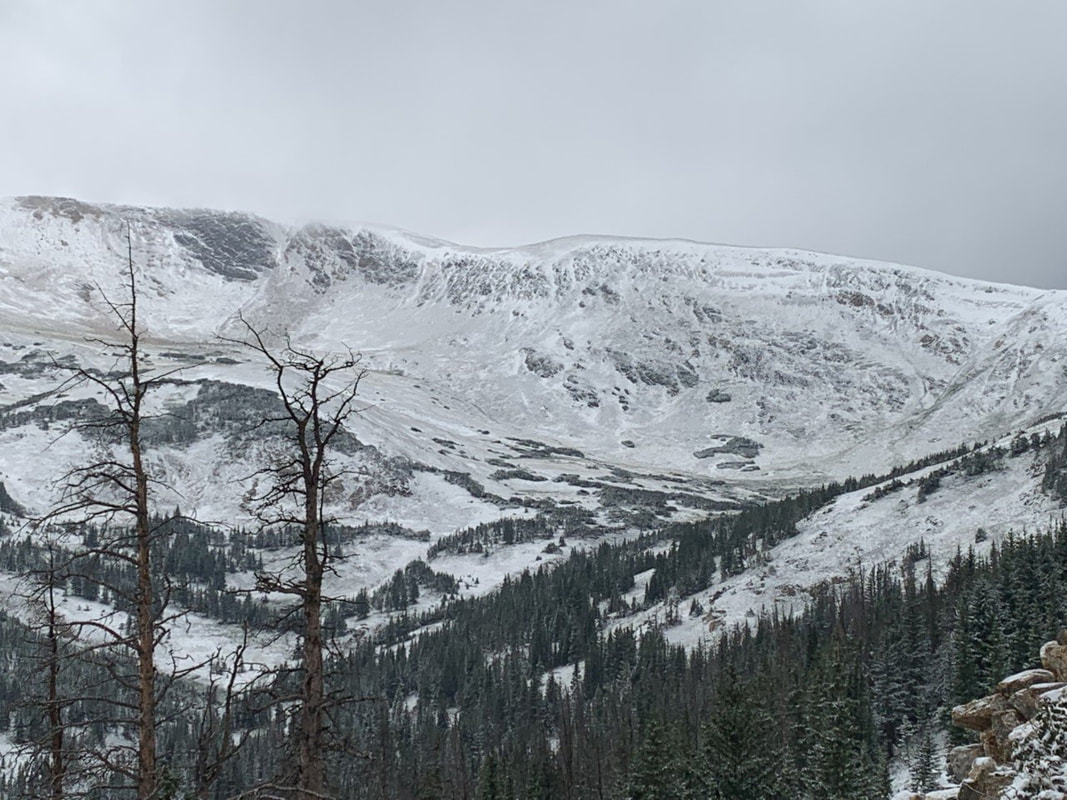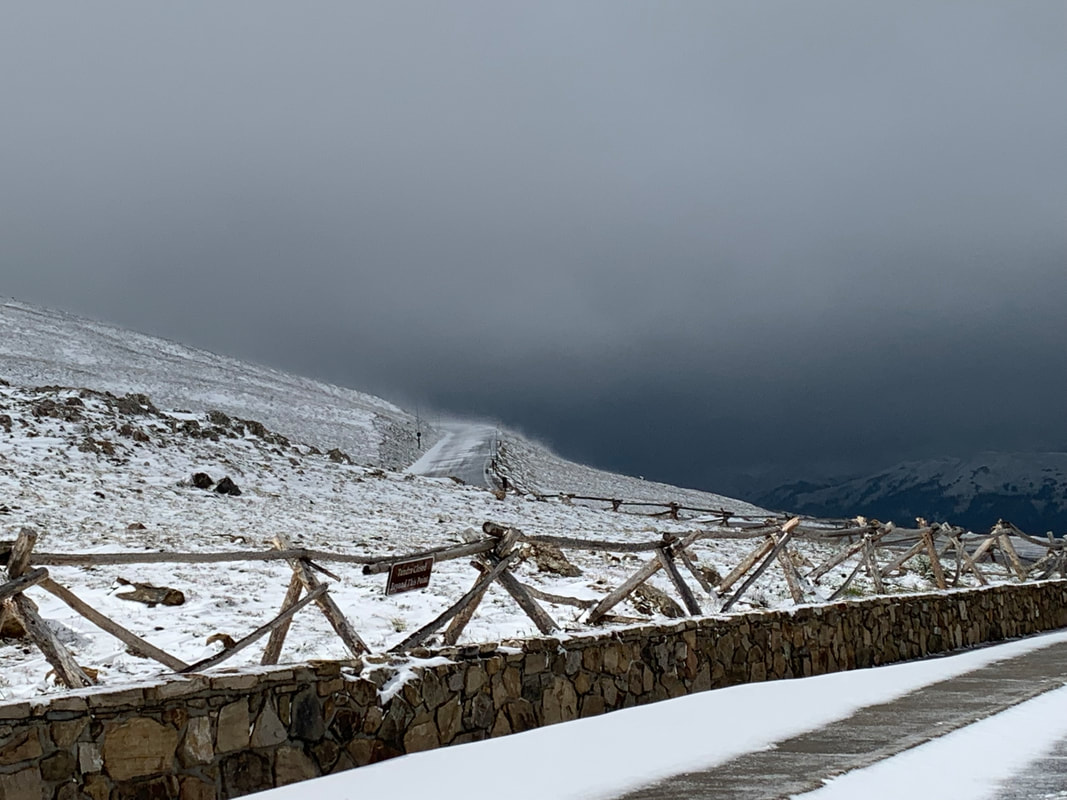|
RMNP UPDATE - August 20, 2021
Trail Ridge Road in Rocky Mountain National Park reopened this afternoon at approximately noon followed by Old Fall River Road at 12:30. Photographs attached are during plowing of Old Fall River Road as well as from the Alpine Visitor Center parking lot looking toward Gore Range Overlook. Road conditions included significant ice, gusts of 50 mph as well as white out conditions due to blowing snow above 11,500 feet.
0 Comments
RMNP UPDATE - August 20, 2021
Trail Ridge Road and OFRR are temporarily closed due to white out conditions and ice buildup. Rocky Mountain National Park snowplow operators are currently plowing the road. Please call the Trail Ridge Road recorded status line at (970) 586-1222 or follow the park's twitter site @RockyNPS for updates. RMNP UPDATE - August 18, 2021
Beginning this week, all paved roads and parking areas within Rocky Mountain National Park will be striped. Work is expected to last three weeks and should be completed by September 4, weather and resources permitting. During the day, when striping occurs on paved roads, travelers should expect rolling delays up to 30 minutes Monday through Friday. Most work for parking areas will be completed at night Sundays through Thursdays from 8 p.m. to 4 a.m. When striping occurs in parking lots, those areas will be closed. Striping work will not occur on weekends. For further information about Rocky Mountain National Park, please visit www.nps.gov/romo or call the park’s Information Office at (970) 586-1206. Date: August 16, 2021
WASHINGTON – Following the latest science and guidance from the Centers for Disease Control and Prevention, the National Park Service (NPS) is immediately requiring visitors, employees and contractors to wear a mask inside all NPS buildings and in crowded outdoor spaces, regardless of vaccination status or community transmission levels. “Visitors to national parks are coming from locations across the country, if not across the world. Because of this, and recognizing that the majority of the United States is currently in substantial or high transmission categories, we are implementing a service-wide mask requirement to ensure our staff and visitors’ safety,” said NPS Deputy Director Shawn Benge. This requirement will be in effect until further notice and applies to all NPS buildings and public transportation systems. It also applies to outdoors spaces where physical distancing cannot be maintained, such as narrow or busy trails and overlooks. “Being vaccinated is the most effective way to protect yourself and your loved ones from the dangers of the coronavirus. Masking in addition to being vaccinated will help prevent the spread of new variants and protect those who are more at risk of severe disease. This simple act of kindness allows us to be safe while we continue to enjoy the benefits of our national parks,” said Capt. Maria Said, MD, an epidemiologist in the NPS Office of Public Health and a member of the U.S. Public Health Service Commissioned Corps. Individuals looking to get a COVID-19 vaccine can visit vaccines.gov to find a location close to them and make an appointment. Individuals can also text their ZIP code to 438829 and get a text with the closest COVID-19 vaccine location. www.nps.gov  Rocky Mountain National Park Hoist Operation Balanced Rock on July 26. Photo courtesy Rocky Mountain National Park Rocky Mountain National Park Hoist Operation Balanced Rock on July 26. Photo courtesy Rocky Mountain National Park RMNP UPDATE - On Monday, July 26, a 41-year-old female from Texas was hiking and scrambling in the Balanced Rock area in Rocky Mountain National Park when she took an approximate 20-foot fall. She was able to call for emergency assistance around noon on her cell phone. Rocky Mountain National Park’s Search and Rescue Team members arrived on scene and provided Advanced Life Support care. Due to her location and severity of injuries, park rangers requested assistance from a Colorado National Guard helicopter to extricate her via a hoist operation, using a winch operated cable. This occurred at approximately 6:15 p.m. A Med Evac air ambulance has been pre-positioned in the MacGregor Ranch area to receive the patient from the National Guard helicopter. She was then flown from the meadow to Medical Center of The Rockies. No further information is available at this time. The Planning, Environment and Public Comment (PEPC) website experienced technical issues this past week that were out of the park's control. The PEPC system came back online today, July 22. Submission of comments for this phase has been extended from July 19 through July 26.
Day Use Visitor Access Strategy - Rocky Mountain National Park (U.S. National Park Service) (nps.gov) NEWS from the City of Boulder Friday, July 16, 2021 Media Contact: Dionne Waugh, Media Relations, 303-518-1894 [email protected] bouldercolorado.gov BOULDER, Colo. – The Boulder Police Department is saddened to share the news today that it has lost another member of its family.
At approximately 5 p.m. yesterday, July 15, BPD received a call from law enforcement officials in Rocky Mountain National Park that one of our officers who was hiking in the park had fallen from a treacherous part of a mountain path and died. She was positively identified as Ashley Haarmann, 35. Officer Haarmann had worked for the Boulder Police Department for approximately one and half years. Chief Maris Herold sent members of BPD Command Staff to the park to make sure Officer Haarmann was covered with the American flag until she was escorted to the Boulder County Coroner’s Office late last night. “Our Department is again mourning the loss of a friend, coworker and dedicated public servant,” Chief Herold said. “Ashley was doing something she loved yesterday, and though it’s not much, I hope we can take some solace in that.” RMNP News Release - July 16, 2021
Last night, Thursday, July 15, park rangers recovered the body of a 35-year-old female from Loveland, Colorado, just west of Martha’s Couloir on Mount Lady Washington in Rocky Mountain National Park. Yesterday afternoon, park rangers were notified by a family member that they had received information via a satellite communication device of an emergency. Rocky Mountain National Park Search and Rescue team members arrived on scene via ground at 4:45 p.m. and were aided with aerial search efforts by Mesa Verde Interagency Helitak crew, assigned to the Morgan Creek Fire near Steamboat Springs. It appears the woman took an approximate 200-foot tumbling fall. The woman’s body was flown at approximately 8:15 p.m. via a long line operation to the Upper Beaver Meadows helipad where she was transferred to the Boulder County Coroner’s office. The woman’s name will be released after next of kin are notified. As is standard protocol the incident is under investigation. Rocky Mountain National Park Search and Rescue Team members stayed at the Chasm Shelter last night and are hiking out this morning. RMNP UPDATE - July 8, 2021
The Fern Lake Road has reopened from the winter turnaround to the Fern Lake Trailhead. RMNP UPDATE - July 7, 2021 Tomorrow, Thursday, July 8, and potentially Friday, July 9, the Fern Lake Road will be closed beyond the winter turnaround to all uses. The park’s road crew will be replacing a culvert that was damaged during the East Troublesome Fire and received further damage during recent heavy rains. For more information on Rocky Mountain National Park please visit www.nps.gov/romo RMNP News Release - July 2, 2021
Old Fall River Road will open to vehicles on Saturday, July 3. Old Fall River Road normally opens by fourth of July weekend. Old Fall River Road was built between 1913 and 1920. It is an unpaved road which travels from Endovalley Picnic Area to above treeline at Fall River Pass, following the steep slope of Mount Chapin’s south face. Due to the winding, narrow nature of the road, the scenic 9.4-mile route leading to Trail Ridge Road is one-way only. Vehicles over 25 feet and vehicles pulling trailers are prohibited on the road. Travelers should plan ahead for Rocky Mountain National Park’s pilot temporary timed entry permit reservation system which began on May 28. Park staff are managing for significant increases in visitation to public lands in Colorado, including Rocky Mountain National Park, along with continued Covid-19 concerns, ongoing park seasonal staff shared housing challenges, reduced shuttle bus capacity and residual fire impacts in some areas of the park from historic fires in 2020. There are two types of reservations. One reservation permit is for the Bear Lake Road Corridor, which includes the entire corridor and access to the rest of the park. This reservation period is from 5 a.m. to 6 p.m. The second reservation permit is for the rest of Rocky Mountain National Park, excluding the Bear Lake Road corridor. This reservation period is from 9 a.m.to 3 p.m. and includes Old Fall River Road and Trail Ridge Road. Permits issued using the reservation system allow park visitors to enter the park within two-hour windows of availability. The reservation system applies to all areas of the park. Timed entry reservations are full for the month of July. However, twenty-five percent of reservation permits are being held and available for purchase the day prior at 5 p.m. through recreation.gov. These continue to sell out quickly and visitors are encouraged to plan ahead when possible. For more information and a link to recreation.gov visit https://www.nps.gov/romo/planyourvisit/timed-entry-permit-system.htm |
RMNP UpdatesPress Releases from Rocky Mountain National Park and the Rocky Mountain Conservancy.
Archives
September 2025
|
rmnp updates
© Copyright 2025 Barefoot Publications, All Rights Reserved






